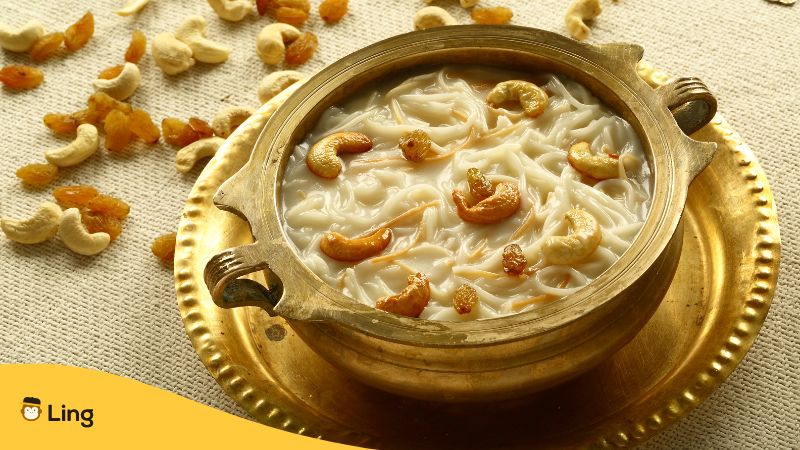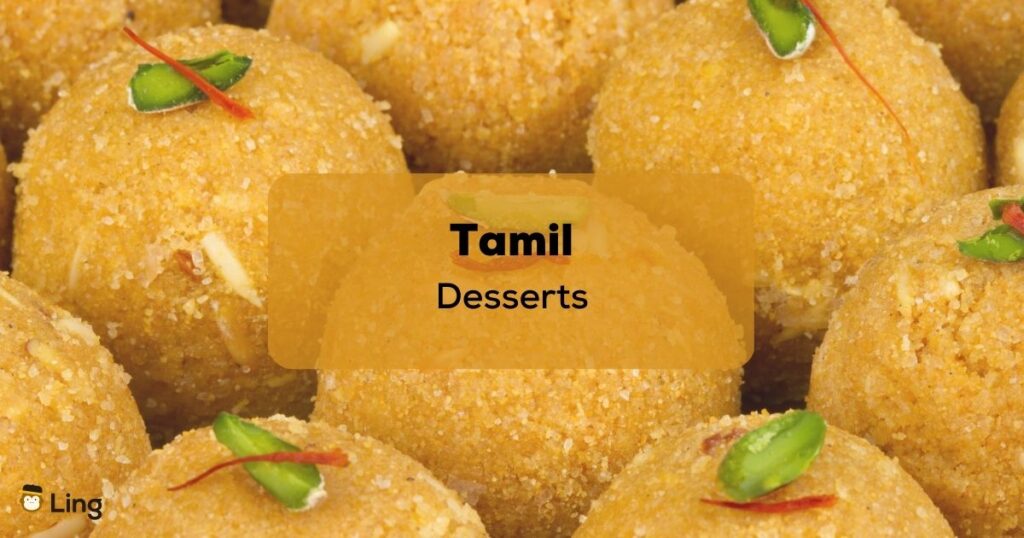Tamil desserts, also known as மிட்டாய் “mithai,” play an essential role in Tamil culture for several reasons like festivals, religious sacrifices, or just plain good-natured hospitality. Let’s see what mouth-watering delicacies the Tamils have in store with us in today’s post! Let’s start!
Desserts and sweets are often served during special occasions such as weddings, and other family celebrations, to symbolize happiness and prosperity and to mark a special event. In Tamil culture, serving desserts to guests is considered a sign of hospitality and a way to show respect and welcome.
Tamil desserts are also considered a culinary art, with many recipes passed down through generations. They often require skillful preparation and traditional ingredients like coconut and various grains. They are also essential for religious significance and are usually offered as பாயாசம் payasam (offerings) in temples. According to the locals, some sweets are associated with specific deities and used in rituals. Many Tamil desserts are made with ingredients that are considered to be healthy, such as jaggery, which is a natural sweetener and is believed to have health benefits.

Tamil Desserts
Tamil cuisine is known for its rich and diverse flavors, and the sweet dishes are no exception. Below are some of the best desserts you should pair with your favorite dishes!
1. பொங்கல் SweetPongal: A sweet rice pudding made with rice, lentils, and jaggery. It is often served during the Pongal festival.
2. லட்டு (Ladoo): A round-shaped sweet made with flour, ghee, and sugar. It can be made with different types of flour, such as wheat, semolina, or besan.
3. பாயாசம் (Payasam): A sweet pudding made with yummy condensed milk, sugar, and various ingredients such as rice, lentils, or vermicelli.
4. குல்ஃபி (Kulfi): A traditional Indian ice cream made with milk, cream, and sugar and flavored with cardamom, saffron, or rose water.
5. ஜலேபி (Jalebi): A sweet, deep-fried, spiral-shaped dessert that may feel like crunchy bread toasts made from wheat flour and soaked in sugar syrup.
6. அப்பம் (Appam): A sweet, pancake-like dessert made from fermented rice flour and coconut milk.
7. அதிரசம் (Adhirasam): A deep-fried sweet made from rice flour, jaggery, and fragrant cardamom powder roasted.
8. மைசூர் பாக் (Mysore Pak): This is a delicious south Indian dish made of gram flour, ghee, and sugar.
9. ரசமலை (Rasamalai): A sweet made from curd, chenna, and sugar syrup.
These are just a few examples of the many delicious Tamil desserts available. Even if you are not someone who may eat dessert, each traditional sweet has its unique flavor and texture and is worth trying.
What Makes Tamil Desserts Unique?
Tamil desserts are unique in their use of a variety of ingredients and flavors. Some of the key characteristics that set Tamil sweets apart include:
- Jaggery: Tamil desserts often use jaggery, an unrefined sugar made from palm sap, instead of white sugar. This gives the desserts a distinct, earthy sweetness.
- Rice flour: Many Tamil sweets are made with rice flour, which gives them a unique texture and a subtle, nutty flavor.
- Coconut: Coconut is used in many Tamil sweets as a flavor and binding agent. It gives a rich flavor and creamy texture to the desserts.
- Lentils: Many Tamil sweets use, such as urad dal, as a critical ingredient. These lentils are ground into a fine paste and used to make sweets like adhirasam, which gives them a unique texture and nutty flavor.
- Spices: Tamil desserts often include a variety of spices, such as cardamom, saffron, and nutmeg, which adds an exciting flavor to the dessert.
All these ingredients and flavors come together to create a unique and delicious experience that is different from other Indian sweets or desserts from other cuisines.

Learn Tamil With The Ling App
Whether it is for a small sweet taste or a creamy dessert, the traditional sweets of Tamil Nadu should be one of the things you must not miss out on. They are simply amazing and good for the body!
But there could be a bigger problem if you look for a greater cultural experience. If you want to truly appreciate the cuisine and the people who make these desserts, learning Tamil can help you. The best way to do so is by using a language-learning app like Ling! The Ling app is an amazing app that not only teaches you Tamil but 60+ other languages! And when we say languages, we do not just mean the popular ones! We have a library of lessons for some of the Asian languages as well! So if you want to learn Tagalog or even Urdu, we got you covered!
Ling is a popular tool for language learning because it offers a variety of features that make learning a new language more effective and engaging. Inside, you’ll see that most of the lessons are based on real-life scenarios, which makes the language more relatable and easier to remember. It helps learners to understand how the language is used in daily life and helps them to apply the language in real-life conversations.
Additionally, Ling uses game-like elements, such as rewards and levels, to make the language learning experience more enjoyable and motivating. And to tie everything together, the developers made sure that you can learn a lot by simply using the app consistently for 15 minutes a day! It’s like you have nothing to lose and many more to gain from this app!
So what are you waiting for? Download it now from the Play Store and App Store to start learning Tamil and other languages!
















